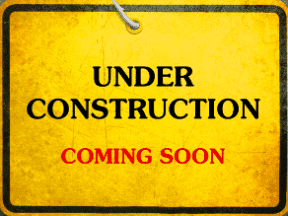Does your natural search traffic convert poorly? There’s a reason, and you can do something about it.
Searchers vs. Direct Visitors
Direct visitors are different than searchers. Direct visitors type in your domain deliberately. They know what to expect from your brand, and possibly from your site if they’re repeat visitors. Direct visitors land on your home page, experience the flow you intended, and ideally make a purchase.
Not so with searchers. Searchers enter a few words into Google (or Bing or Yahoo) and Google decides which sites to display. If your site is among the chosen search results, the searcher drops from Google into the middle of your site without any of the user experience or flow your designers planned.
Every page that the search engines have indexed can potentially show up in a search result and receive a drop-in visitor from search engines. Every page is a landing page in natural search.
Every page is a landing page in natural search.
Calls to Action
When you change your mindset to think of every page as a landing page, you can start to understand that some of the templates on your site are not optimized for conversion. Hopefully product pages have a clear call to action, such as “Buy Now” and “Add to Cart.”
Customer support pages can have low conversion rates. Visitors to those pages are not in a purchase frame of mind. They already have the product and they want support, not to purchase something else. You could try cross selling accessories and parts in your support content, depending on the content type.
For example, if you have a page listing user manuals by product, you could try cross selling items related to each product, inline with the manuals. Be sure to test this, though. The last thing you want to do is anger customers when they’ve come for support.
Calls to action are even more important on product informational pages. Say you sell high-end men’s shoes, and you offer related content like how to clean and buff shoes, how to care for leather, and how to match belts and other accessories to shoes. Each of those content pages, if optimized for search engines, could draw searchers. But when they get there, they read your helpful content and go off to clean their shoes or do more research.
To keep their attention beyond their immediate informational desire, offer a call to action on content pages also. The call to action needs to be clear and visible, such as “Get our informational newsletter for style and care tips from the leader in luxury men’s shoes. See the shoes featured in this article.” Think about what additional information you would want if you were about to click away from the page. Get that in front of visitors.
Placing a small link to your newsletter sign-up page in the header or at the bottom navigation does not count as a visible call to action.
Clear Labeling
With category pages, the challenge is different. Some ecommerce sites are stripped so bare of textual content that it’s difficult to know where you are on the site even if you’ve browsed your way there.
Now put yourself in a searcher’s shoes. When you drop into a category page from a search engine, are there textual signals as to what you’re looking at, or is the only clue the types of products displayed? If searchers don’t instantly understand what they’re looking at and where to go next, it’s very likely they’ll just bounce right back out of your site to choose another search result.
Now put yourself in a searcher’s shoes. When you drop into a category page from a search engine, are there textual signals as to what you’re looking at, or is the only clue the types of products displayed?
Audience Confusion
Does your site serve two or more different audiences with similar products in different sections of the site, such as consumers vs. businesses? If you can target different keywords for each audience, the issue should be less severe. If not, it’s likely that audience A will end up on the content intended for audience B, and vice versa.
Many sites in this situation place decision trees on the home page or top-level category pages. This works well when the customer starts at the home page and follows the path you’ve laid out for him. But searchers may enter your site on deeper pages, behind the pages that offered the decision to self-select audience A or B. These searchers may not take the time to find the content targeted toward them, or may presume that you don’t sell to them, and bounce back to the search results.
Because each page is a landing page, each page needs to offer the ability to select the appropriate audience. Depending on the value of the second audience, that call to action to switch to content meant for them may differ. Your natural search analytics data will tell you if large numbers of searchers are landing where you don’t expect them.
Conversion Rate Optimization
Search engine optimization focuses on driving more visitors to your site. If your pages are well optimized for relevant keywords, in theory most of the people landing on your site are within your target audience. Even so, SEO often needs some help from another discipline: conversion rate optimization.
It’s far more efficient to convert more natural search visitors than to try to drive additional visitors that don’t convert. It’s also a better experience for your customers and search visitors, because they get what they came to your site for.
Conclusion
Each of the above situations could explain why natural search visitors aren’t converting on your site. Start with your natural search analytics data to identify which pages convert, which ones have high bounce rates, and where traffic goes that isn’t expected. Develop possible solutions to those issues. Then test.
Don’t just develop a fix for the issue you’re seeing and assume it’s fixed. Test it, determine if your natural search performance on those pages is stronger as a result of the change and whether it caused any negative effects in other marketing channels. For tools to conduct those tests, see “10 A/B Testing Tools for Small Businesses,” a previous article.




